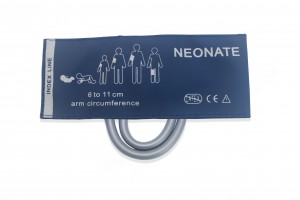Core Tip: Newborns need to measure blood pressure after birth. The main measurement methods are the same as adults, but the width of the cuff used to measure blood pressure can be determined according to the age of different children, generally 2/3 of the length of the upper arm. When measuring neonatal blood pressure, you should also ensure that the environment is quiet, so that the measurement can be more accurate.
A child needs to undergo a series of physical examinations as soon as it is born, so that it can be clear how the child’s physical condition is. Measuring blood pressure is one of them. It needs to be analyzed by a blood pressure measuring instrument. Generally, there will be no abnormalities in the blood pressure of a newborn. Unless they have a congenital disease, parents don’t need to worry too much about this problem. If there is an abnormal blood pressure, they should find ways to improve and use healthy and safe methods.

The normal value of neonatal blood pressure is generally between 40 and 90. As long as it is within this range, it is normal. If the blood pressure is lower than 40 or higher than 90, it proves that there is an abnormal situation, and the child should be relieved in time for blood pressure instability. Under the guidance of a doctor, some drugs can be used for treatment, but the child’s body is relatively weak and it is easy to cause side effects of the drug. Therefore, the child can improve the blood pressure problem through the correct diet. If the blood pressure is abnormal due to the disease The primary disease should be actively treated.
The correct method of measuring blood pressure should also be understood clearly. When measuring blood pressure for a child, it should be measured in a quiet environment. Do not let the child cry. Let the child lie flat with both feet flat, elbows and forearms. Place it in a comfortable position with the right upper arm exposed, open the blood pressure monitor and place it on a stable place close to the child’s body. When using a blood pressure cuff, you should first squeeze all the air in the cuff and then place it. Do not tie the child about three centimeters above the elbow joint of the child’s upper right arm.
After tying, close the valve tightly. The line of sight of the measuring person should be kept at the same level as the scale on the mercury column, so that the height of the mercury column can be observed. Inflate at a very fast speed, and wait until the radial artery pulse disappears. Then stop the inflation and open the valve slightly, so that the mercury will slowly drop. When you hear the first pulse beating, it is high pressure, which is the systolic blood pressure. Then continue to deflate slowly until the mercury drops to a certain mark. At this time, the sound will suddenly slow down or disappear. At this time, it is low pressure, which is what we call diastolic blood pressure.
Post time: Nov-30-2021

